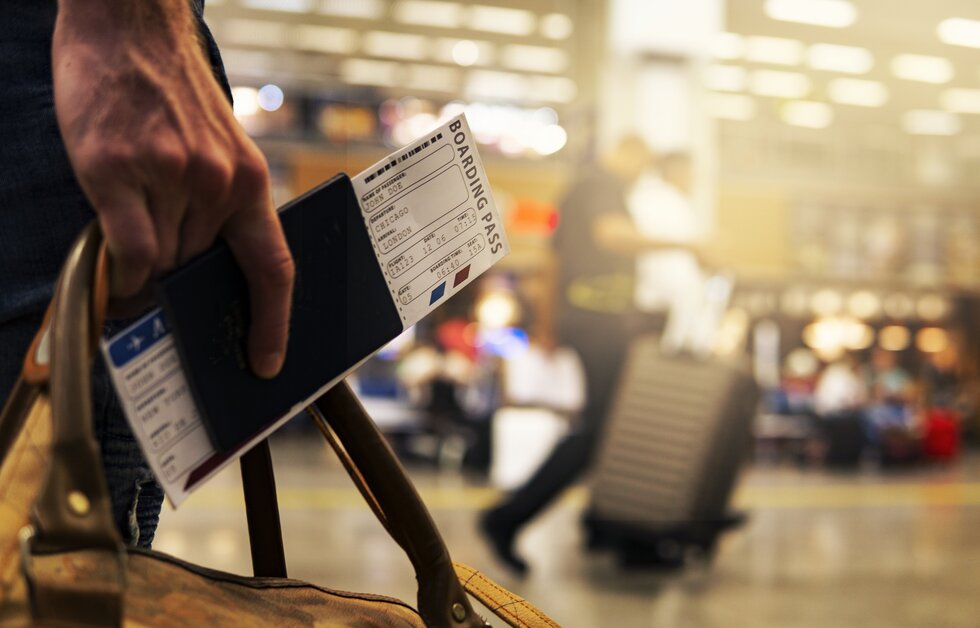The physical presence test explained: How to qualify for the Foreign Earned Income Exclusion

Living and working abroad can bring freedom, but it also means navigating a unique set of US tax rules. One of the most important is the Physical Presence Test, a standard that determines whether you can shield part of your income from taxation. It connects directly to the Foreign Earned Income Exclusion, offering a pathway to significant savings if you qualify.
In this guide, you’ll see how the rules work, how to select the most favorable 12-month period, and how housing benefits can increase your overall savings.
This article is brought to you by Taxes for Expats – a trusted leader in guiding Americans overseas through complex tax rules. If you’re ready to understand the Physical Presence Test in detail and maximize your FEIE benefits, our experts are here to help every step of the way.
What is the physical presence test?
The physical presence test is a time-based rule that looks only at where you spend your days. To qualify, you must be abroad for 330 full 24-hour days within any 12 consecutive months. This clear standard makes it one of the most practical ways to unlock the Foreign Earned Income Exclusion of $130,000 in 2025.
The IRS evaluates your situation by confirming you have a tax home outside the United States and that you meet either the bona fide residence test or the physical presence test. It also applies residency rules, such as the green card and substantial presence tests, when classifying taxpayers. With that foundation, the next step is to understand exactly what the physical presence test requires.
What are the essentials to qualify for the physical presence test
Unlike the residence test, this one is purely about counting days. Each counted day must run from midnight to midnight, and your travel record becomes the backbone of proof.
-
330-day threshold – To qualify, you need 330 complete days abroad within your chosen window. Remember, days in international waters do not count, even if you’re in transit.
Use our 330-day requirement calculator to track your qualifying days and ensure you meet this critical threshold before filing Form 2555. - The 12-month window – You can select any consecutive 12 months, and it doesn’t have to match the calendar year. This flexibility lets you position your qualifying period to maximize the exclusion available for your tax return.
- Recognized locations – Only days in a foreign country count, whether on land or within its territorial waters. US territories like Puerto Rico, Guam, and American Samoa aren’t treated as foreign for this test.
- Handling interruptions – Trips back to the US reduce your foreign day count, and even a few hours spent stateside disqualify that day. However, a sub-24-hour layover between two foreign destinations doesn’t break your streak, though it also isn’t counted as a day. For a partial-year qualification, the exclusion is prorated on Form 2555.
How to precisely count your 330 days abroad
You’ll count only full days physically inside a foreign country, then choose the 12-month span that gives you 330 qualifying days. The steps below show the calculation and preview edge cases you’ll handle afterward.
Step 1: Map every entry and exit for the US and each country in a simple timeline. Pick any 12-month period that overlaps your tax year, not just January–December.
Step 2: Count only full 24-hour days you were present in a foreign country, midnight to midnight. Arrival or departure days touching the US do not count as foreign days.
Step 3: Exclude time in international waters or international airspace. Territorial waters and a country’s airspace count toward presence in that country.
Step 4: Apply the transit rule for short US layovers – under 24 hours between two foreign points is not a US presence, but it does not create a foreign day either. Log it and move on.
Step 5: Total the qualifying days inside your chosen window and confirm you reach 330. If short, slide the window forward or back and recompute.
Step 6: Keep proof for your physical presence test: passport stamps, e-tickets, travel logs, and app exports to support Form 2555 if the IRS asks.
Use a travel-day app or spreadsheet to auto-sum full days. Cross-check dates with passport stamps and airline confirmations. Accurate tracking safeguards your FEIE claim.
Common situations that show how the physical presence test works
Many expats face similar day-count challenges when trying to qualify for the Foreign Earned Income Exclusion. Below are everyday situations that illustrate how the 330-day rule and prorating work in practice, so you can see how to apply the rules to your own travel pattern.
- Continuous stay abroad – Living abroad for a full year without returning to the US makes the qualification straightforward. A stay from April 1, 2024, to March 31, 2025, easily clears 330 days. On the 2025 tax return, only the 90 days from January 1 to March 31 count, giving a prorated FEIE of about $32,000.
- Multiple US trips – Frequent returns to the US reduce your count, but you can shift your 12-month window to minimize the lost days. Moving the start date just a few weeks can cut out US visits and leave 330+ foreign days, raising the 2025 FEIE to nearly $88,000 instead of nothing.
- Under 24 hours in the US – Flying Paris → JFK (5-hour layover) → Mexico City doesn’t break your record of foreign days. That day is not a US day but also doesn’t count as foreign, so as long as your other days abroad add up, you still qualify.
- Time at sea – When traveling by cruise ship, only the days spent in port or within a country’s territorial waters count. A five-day trip with two days in international waters and three days in port adds just those three port days to your 330-day total.
- Partial-year abroad – If you qualify for only part of the year, the FEIE is prorated. With 200 qualifying days in 2025, you can exclude about $71,000 of foreign income instead of the full $130,000.
- Arrival and departure days – Any day you leave or arrive in the US cannot be counted as a foreign day. For instance, if you depart the US at 10:00 a.m. on May 10, your first qualifying day abroad is May 11.
- When the calendar year does not work – Looking only at January through December can cause you to fall short. Someone abroad 332 days from April 2024 to March 2025 fails under the calendar year, but passes by choosing that April–March period, unlocking about $32,000 of FEIE for 2025.
- Living in a high-cost city – Housing benefits can add significant value. Spending 200 days in Hong Kong in 2025 with $60,000 in rent and utilities allows nearly $10,000 in housing exclusion before applying the FEIE to the remaining income.
Physical presence vs bona fide residence
Two routes let Americans abroad prove eligibility for FEIE – one is purely day-counted, the other is residency-based over a full calendar year. Below is a tight side-by-side so you can see how rules, evidence, and timing differ before diving deeper.
| Key differences | Physical Presence Test | Bona Fide Residence Test |
|---|---|---|
| Core basis | Objective day-count; purpose doesn’t matter | Facts and circumstances; intent and ties matter |
| Minimum time | ≥330 full days in any 12 consecutive months | Uninterrupted period that includes an entire tax year (Jan 1–Dec 31 for calendar filers) |
| Window flexibility | 12-month period can start any day – pick the span that yields the greatest exclusion | Must include a full tax year; after you establish status, parts of adjacent years can also qualify |
| US trips | Any presence in the US makes that day non-qualifying; transit <24 hours in the US isn’t treated as US presence; international waters don’t count | Brief or temporary trips allowed if you clearly intend to return to your foreign residence without unreasonable delay |
| Tax home | Must have a foreign tax home during the qualifying period | Must have a foreign tax home during the qualifying period |
| Who can qualify | US citizens and resident aliens | US citizens; resident aliens only if citizens or nationals of a treaty country |
| Evidence you’ll show | Passport stamps, tickets, travel logs, entry/exit records | Lease, utility bills, local tax filings, residency permits, family location, community ties |
| Best fit | Frequent movers, contractors, digital nomads, short postings | Settled expats on open-ended or long assignments |
| Form 2555 section | Part III | Part II |
| FEIE interaction | Same annual cap – $130,000 for 2025; foreign housing exclusion may also apply | Same annual cap – $130,000 for 2025; housing exclusion may also apply |
Which test is best suited for your situation? If your life is mobile, the physical presence test is usually simpler – just count days and keep clean records. If you’ve put down roots abroad, the Bona Fide Residence Test often aligns better with your facts and paperwork.

Your clear, reliable roadmap to claiming the FEIE
Use the Foreign Earned Income Exclusion to shield up to $130,000 of 2025 wages earned abroad. Below is a tight, actionable path that covers the steps, the forms you’ll file, and the key dates to hit.
Step 1: Confirm you qualify under the physical presence test – be abroad 330 full days in any 12 consecutive months that touch your filing year. Count only midnight-to-midnight days in a foreign country; time over international waters or airspace doesn’t count.
Step 2: Choose the 12-month window that maximizes your FEIE for this tax year; the period can start on any day so long as it overlaps the year you’re claiming. Keep a precise log of all entries and exits to support your day count.
Step 3: Prepare Form 2555 with your qualifying dates and foreign wages and attach it to Form 1040 when you file. Review the instructions carefully so your day-count period, income sourcing, and exclusions are consistent.
Forms & deadlines
Filing correctly is just as important as meeting the day-count test – missing a form or deadline can cost you the Foreign Earned Income Exclusion. Here are the essential documents and key dates every expat should keep in mind before submitting a return.
- Form 2555 – claim the exclusion; file it with your 1040.
- Form 4868 – extend filing to Oct 15 if needed (extension to file, not to pay).
- Form 2350 – only if you need extra time to meet the presence test; approvals typically run 30 days after you expect to qualify.
NOTE! Americans abroad get an automatic 2-month filing extension to June 15; interest still accrues from April 15.
Get trusted support for your expat tax filing
Claiming the Foreign Earned Income Exclusion through the physical presence test sounds straightforward, but the details can be unforgiving. Between tracking every travel day, choosing the right 12-month window, and preparing Form 2555 correctly, even small mistakes can shrink your benefit.
That’s why Taxes for Expats provides Americans abroad with expert, year-round guidance – helping you qualify with confidence and maximize your savings.

FAQ
The base housing amount is $20,800, and the general cap is $39,000, both prorated by qualifying days.
Yes – you may request a discretionary extension to December 15 by letter, or use Form 2350 if you still need time to meet the PPT.
Eligible costs include rent and utilities (except phone), while purchases, mortgage principal, capital improvements, and lavish expenses are excluded.
Yes – each spouse can claim a separate FEIE if both independently meet the requirements.



